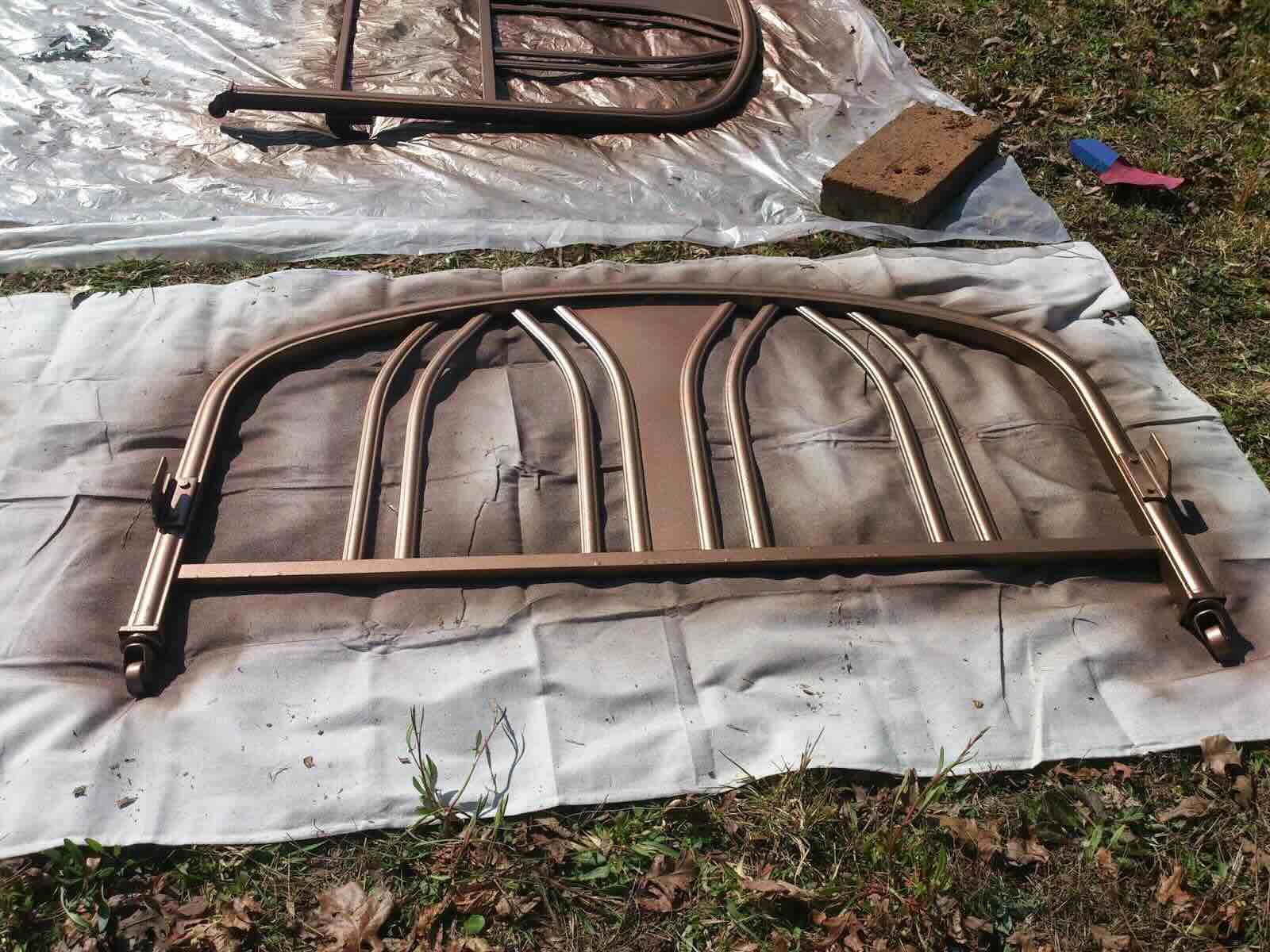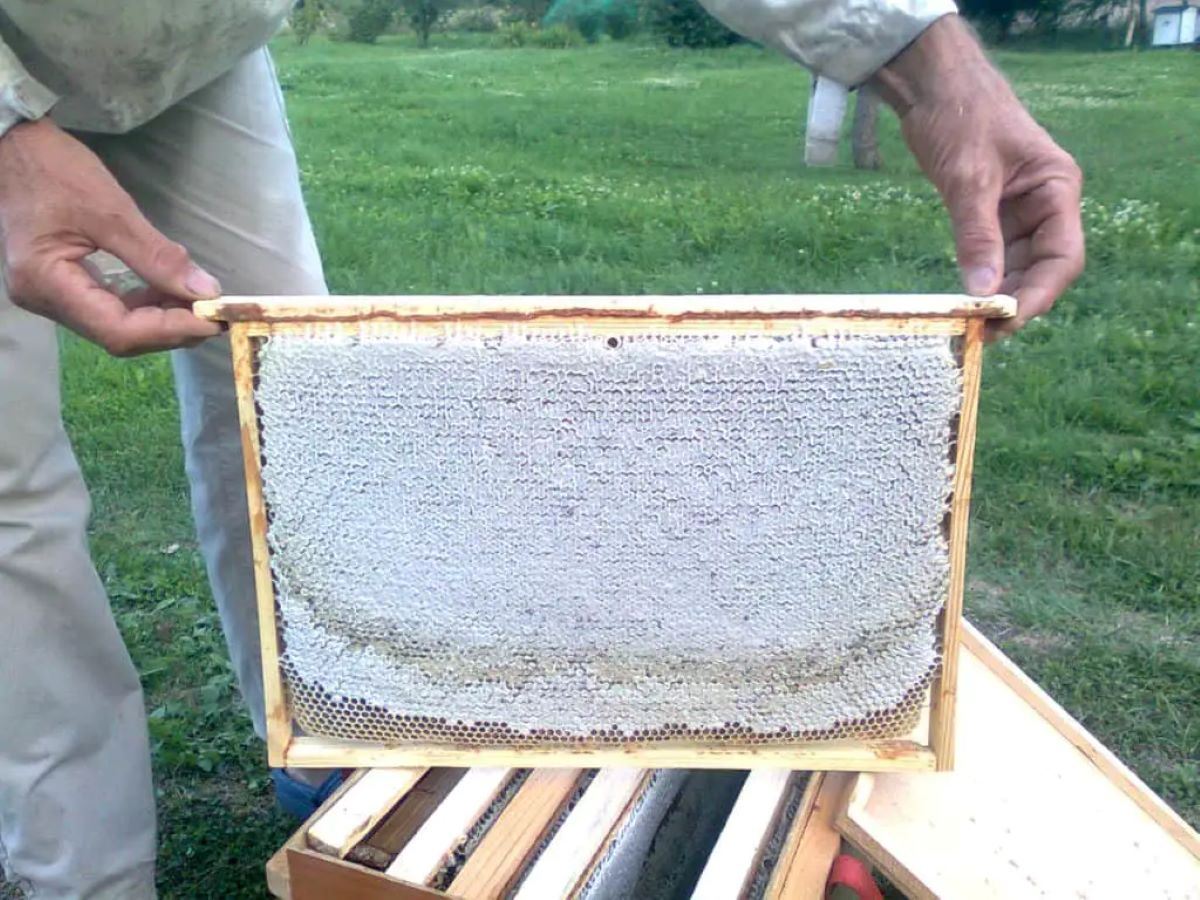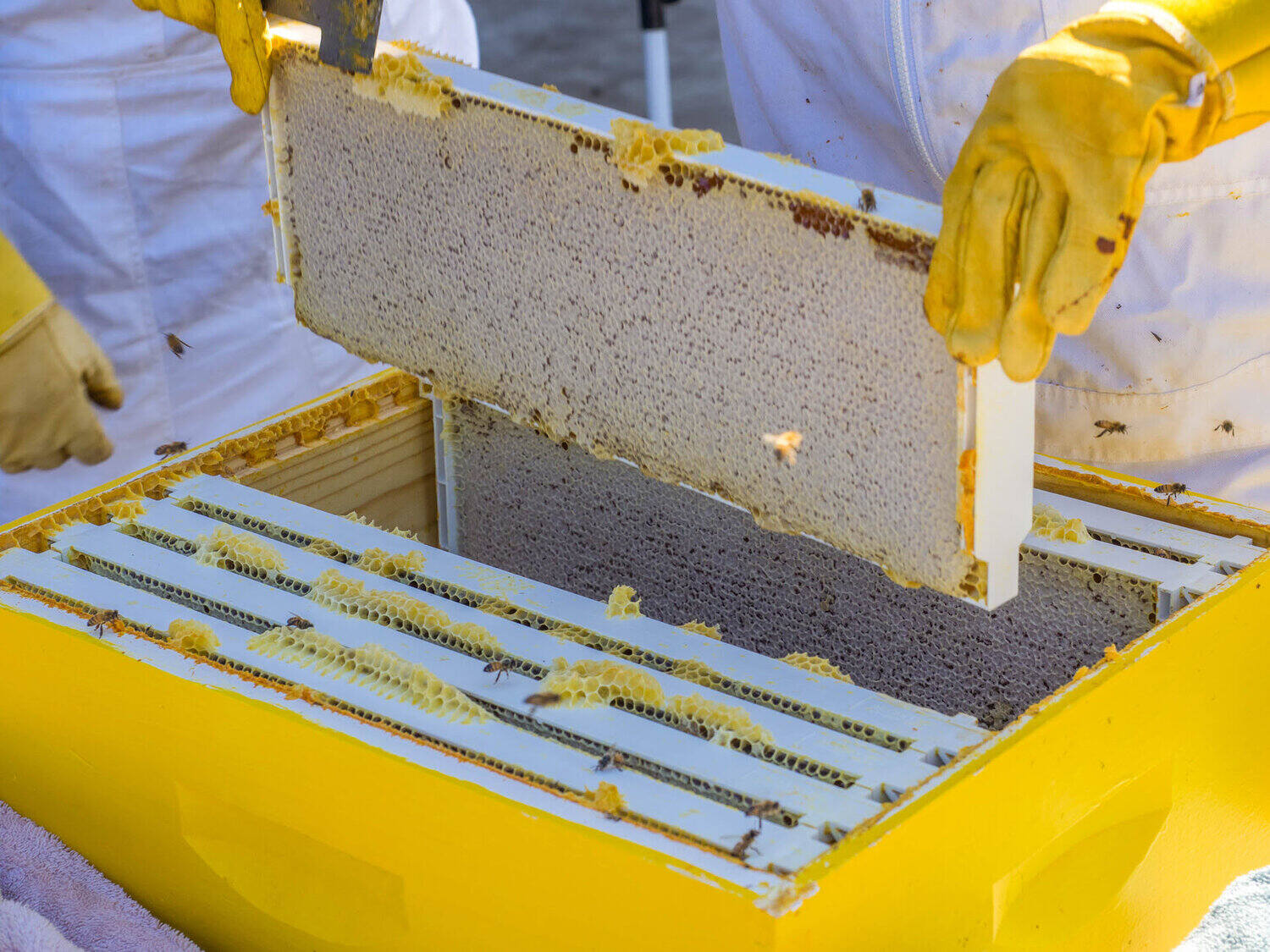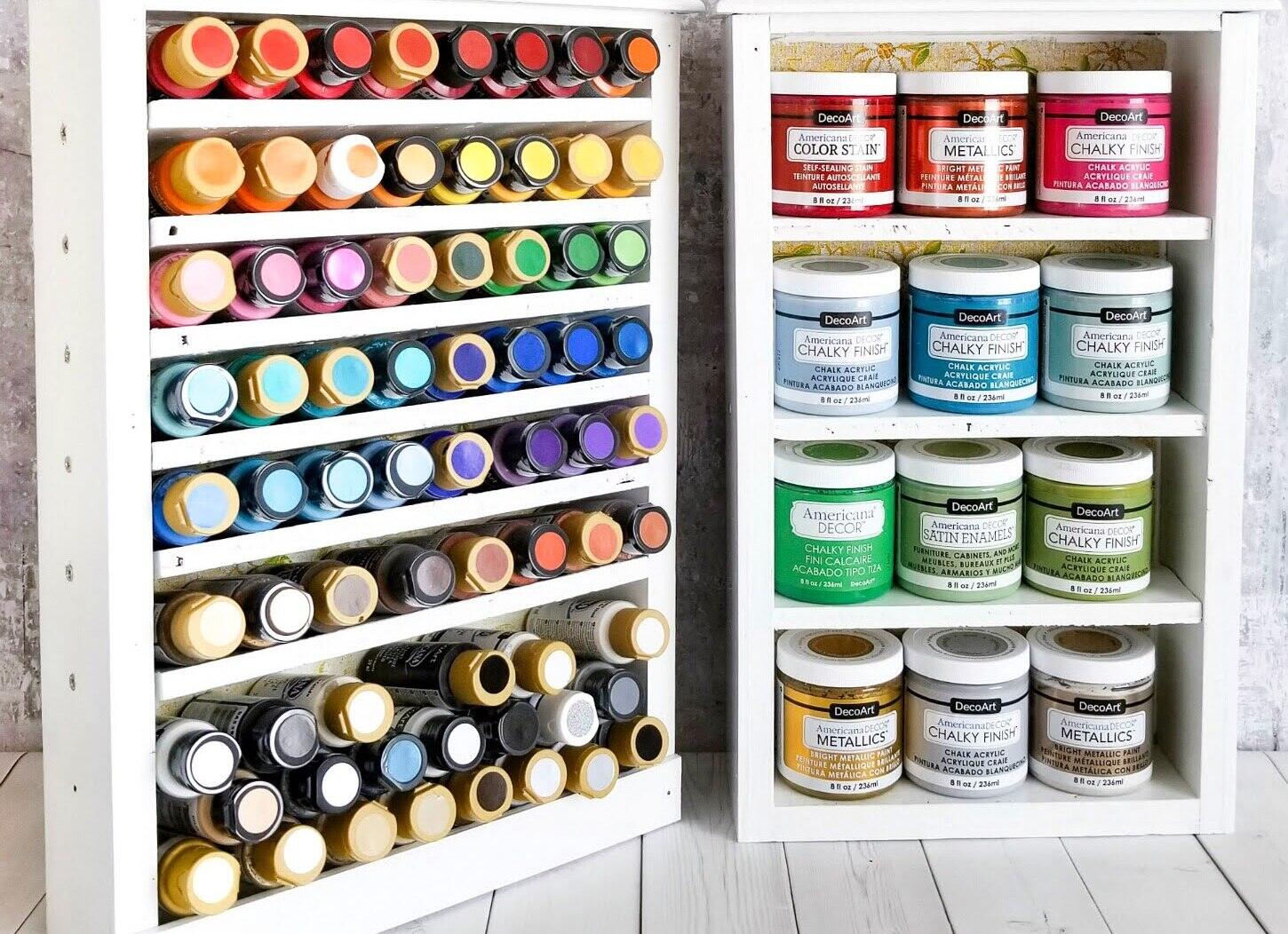

Articles
How To Store Paintings In Frames
Modified: January 23, 2024
Learn how to properly store your valuable paintings in frames with these helpful articles. Protect your artwork and keep it in pristine condition for years to come.
(Many of the links in this article redirect to a specific reviewed product. Your purchase of these products through affiliate links helps to generate commission for Storables.com, at no extra cost. Learn more)
Introduction
Storing paintings in frames is essential for preserving their beauty and longevity. Whether you are an art enthusiast, collector, or artist, proper storage techniques can help protect your valuable artworks from damage caused by dust, light exposure, temperature fluctuations, and pests.
In this article, we will guide you through the process of storing paintings in frames to ensure their long-term preservation. We will discuss the importance of choosing the right frame, preparing the paintings for storage, wrapping techniques, selecting a suitable storage space, considering special considerations for framed oil paintings, and the importance of regular maintenance and inspection.
By following these guidelines, you can keep your paintings in pristine condition and enjoy them for years to come.
Key Takeaways:
- Preserve the beauty and value of your framed paintings by choosing the right frame, preparing them for storage, and selecting a suitable storage space. Regular maintenance and inspection are essential for long-term preservation.
- Safeguard your framed oil paintings by preventing direct contact, controlling temperature and humidity, and implementing regular maintenance. Proper storage techniques ensure the longevity and beauty of your valuable artworks.
Read more: How To Store Framed Paintings
Choosing the Right Frame
When it comes to storing paintings, selecting the right frame is crucial. The frame not only adds aesthetic value to the artwork but also provides protection and support. Here are some factors to consider when choosing the right frame for your paintings:
- Material: Opt for frames made of acid-free materials, such as wood or metal, as they are less likely to cause damage to the artwork over time.
- Size: Ensure that the frame fits the dimensions of the painting properly, without putting excess pressure on the artwork or leaving gaps that can let dust and insects in.
- Backing: Look for frames with a solid backing that provides support and prevents the painting from warping or bending.
- Glass or Acrylic: Consider using glass or acrylic with UV protection to shield the artwork from harmful sun rays, which can fade colors and degrade the quality of the painting.
- Mounting: Opt for frames that allow for easy mounting and securing of the artwork in a way that minimizes contact with the glass or acrylic.
By choosing the right frame, you can ensure that your paintings are well-protected and preserved during storage.
Preparing the Paintings for Storage
Before placing your paintings in frames for storage, it is essential to prepare them properly. This involves several steps to ensure their protection and minimize the risk of damage. Here’s what you need to do:
- Clean the Paintings: Use a soft, lint-free cloth or a brush with gentle bristles to remove any dust or debris from the surface of the painting. Avoid using water or cleaning solutions unless recommended by a professional.
- Inspect for Damage: Carefully examine the paintings for any signs of damage, such as cracks, flaking, or loose paint. If you notice any issues, consult an art conservator before proceeding with storage.
- Address Loose Elements: If you come across any loose elements, such as a loose canvas or frame components, secure them properly to prevent further damage during storage.
- Consider Varnishing: If your paintings are not already varnished, you may want to consider applying a layer of varnish to protect the surface from dust and moisture. Consult a professional conservator for guidance on the appropriate varnish for your artwork.
- Document and Photograph: Take detailed photographs and document the condition of each painting. This will serve as a reference point and provide evidence of the artwork’s condition before storage.
By properly preparing your paintings before storage, you can minimize the risk of damage and ensure their preservation over time.
Wrapping the Paintings
Once you have prepared your paintings for storage, the next step is to wrap them properly to provide an additional layer of protection. Here’s how to wrap paintings for storage:
- Use Acid-Free Paper: Place acid-free paper over the front of the painting to protect the surface. Avoid using regular newspaper or tissue paper, as they can transfer ink or acids onto the artwork.
- Add a Protective Layer: Place a sheet of acid-free cardboard or foam board on top of the painting to provide added protection against impact and pressure.
- Secure the Wrapping: Use acid-free tape or archival adhesive to secure the paper and protective layer in place. Be cautious not to let the adhesive come into contact with the artwork.
- Wrap the Painting: Carefully fold the sides of the paper and secure them with tape to create a snug wrapping around the painting. Make sure the artwork is fully covered and protected from outside elements.
- Repeat for Multiple Paintings: If you are storing multiple paintings, repeat the wrapping process for each artwork individually. This will prevent them from rubbing against each other and minimize the risk of damage.
Remember to handle the wrapped paintings with clean hands to avoid transferring dirt or oils onto the artwork. Additionally, label each wrapped painting with its corresponding documentation or identification to make it easier to locate and identify in the future.
Properly wrapping your paintings ensures that they remain protected and shielded from dust, moisture, and other potential sources of damage during storage.
Selecting a Suitable Storage Space
Choosing the right storage space for your framed paintings is crucial in ensuring their long-term preservation. Here are some factors to consider when selecting a suitable storage area:
- Climate Control: Opt for a storage space with proper climate control to regulate temperature and humidity levels. Fluctuations in temperature and humidity can cause damage to the artwork, such as warping, mold growth, or paint cracking. Aim for a temperature range of 65-75°F (18-24°C) and a humidity level of 40-50%.
- Lighting: Choose a storage area away from direct sunlight or bright artificial lights. Exposure to excessive light can fade colors and deteriorate the quality of the paintings. Indirect or low-level lighting is preferable for storage spaces.
- Security: Ensure that the storage area is secure with proper locks and alarm systems. This will protect your paintings from theft or unauthorized access.
- Cleanliness: Select a clean and dry storage space to minimize the risk of dust, dirt, or moisture coming into contact with the artwork.
- Adequate Space: The storage area should have sufficient space to accommodate the framed paintings without overcrowding. Avoid stacking or leaning the artworks against each other, as this can lead to damage.
- Elevated Storage: If possible, elevate the paintings off the ground to protect them from potential water damage in case of flooding or leaks.
It is also important to regularly inspect the storage space to ensure no signs of pests, leaks, or other potential hazards that could harm the paintings. Finally, maintain a detailed inventory of the stored artworks, including their location within the storage area, to facilitate easy retrieval when needed.
By carefully selecting a suitable storage space, you can create an environment that minimizes the risk of damage and preserves the quality of your framed paintings.
When storing framed paintings, make sure to wrap them in acid-free paper or bubble wrap to protect the surface. Store them upright in a cool, dry place to prevent warping or damage.
Read more: How To Paint Picture Frames
Storing the Paintings in Frames
Once you have prepared the paintings and chosen a suitable storage space, it’s time to store the framed artworks properly. Follow these essential guidelines to ensure the safe storage of your paintings in frames:
- Vertical Position: Store the framed paintings in an upright, vertical position, rather than laying them flat. This helps prevent any potential warping or damage to the artwork.
- Use Shelves or Racks: Place the frames on sturdy shelves or racks, ensuring they are adequately supported and not in danger of falling or leaning against each other.
- Avoid High-Traffic Areas: Store the paintings in a low-traffic area to minimize the risk of accidental bumps or damage.
- Keep Distance: Maintain a safe distance between the paintings to prevent any accidental contact between frames that can lead to scratches or other damage.
- Label and Document: Clearly label each frame and document its details, including the artist, title, and any other relevant information. This will help you easily locate and identify specific paintings when needed.
- Rotate Paintings: If you have a collection of paintings, consider rotating them periodically to distribute any potential exposure to light and environmental factors evenly.
Remember to regularly check on the stored paintings and inspect them for any signs of damage or deterioration. Additionally, avoid exposing the paintings to extreme temperatures, excessive humidity, or drastic fluctuations in climate.
By following these storage guidelines, you can ensure that your framed paintings are stored in a way that minimizes the risk of damage and preserves their beauty and value for years to come.
Special Considerations for Framed Oil Paintings
When storing framed oil paintings, there are some additional considerations to keep in mind due to the unique characteristics of oil paint. Oil paintings require extra care to prevent issues such as cracking, yellowing, or moisture damage. Here are some special considerations for storing framed oil paintings:
- Avoid Direct Contact: Direct contact between the painted surface and the glass or acrylic can lead to sticking or adhesion over time. Place a sheet of acid-free paper or a separation layer between the artwork and the glazing to prevent this.
- Allow Adequate Drying Time: Ensure that the oil paintings are fully dry before framing and storing them. This can take several months or longer, depending on the thickness of the paint layers. Improperly dried paintings can be prone to sticking or smudging during storage.
- Prevent Sticking: To prevent sticking or adhesion between the painted surface and the frame, use wax paper or silicone release paper as a barrier. Cut it to fit the size of the painting and place it between the artwork and the frame backing.
- Control Temperature and Humidity: Maintain a stable environment with moderate temperature and humidity levels. Excessive moisture or heat can cause the oil paint to deteriorate, soften, or become sticky.
- Avoid Exposure to Sunlight: Protect oil paintings from direct sunlight, as UV rays can cause fading and discoloration over time. Indirect or low-level lighting is ideal for the storage area.
- Keep Away from Excessive Cold: Avoid subjecting oil paintings to extremely cold temperatures, as this can cause the paint to become brittle and potentially crack or flake.
- Consider Frame Ventilation: To reduce the risk of condensation and trapped moisture, consider adding small ventilation holes or foam spacers behind the frame to allow air circulation.
It is crucial to monitor oil paintings regularly, especially if they are antique or have a complex paint structure. Keep an eye out for any signs of deterioration, mold growth, or changes in the paint condition, and seek professional assistance if needed.
By taking these special considerations into account, you can safeguard your framed oil paintings and ensure their longevity and beauty over time.
Regular Maintenance and Inspection
Regular maintenance and inspection are key components of proper painting storage. By implementing a routine schedule for checking and maintaining your framed paintings, you can detect and address any issues before they worsen. Here are some essential steps to include in your regular maintenance and inspection process:
- Dust Removal: Regularly dust the frames and surfaces of the paintings using a soft, dry, lint-free cloth or a brush with gentle bristles. This helps prevent the buildup of dust, which can be abrasive and potentially damage the artwork.
- Inspect for Cracks or Flaking: Carefully examine the surface of the paintings for any signs of cracks, flaking, or loose paint. If you notice any issues, consult a professional art conservator to assess the situation and provide appropriate care.
- Check for Pest Infestation: Keep an eye out for any signs of pest activity, such as droppings, webbing, or insect damage. If you suspect a pest infestation, take immediate action to address the problem and protect your paintings.
- Monitor Humidity and Temperature Levels: Regularly measure and monitor the humidity and temperature levels in the storage area. Ensure that they remain within the recommended range to prevent any adverse effects on the paintings.
- Reevaluate Storage Conditions: Periodically reassess the storage conditions, including the location, lighting, and climate control systems. Make any necessary adjustments to ensure optimal preservation of the framed paintings.
- Document and Update Inventory: Keep records and documentation up to date, including photographs, condition reports, and any changes in location or status of the stored paintings. This helps in tracking and managing your collection more effectively.
- Consider Professional Services: For valuable or delicate artworks, consider consulting a professional art conservator for regular inspections and maintenance. They have the expertise to provide specialized care and address any conservation needs.
By incorporating regular maintenance and inspection into your painting storage routine, you can identify and address any issues promptly, ensuring the preservation and longevity of your framed artworks.
Conclusion
Properly storing paintings in frames is essential for preserving their beauty, longevity, and value. Choosing the right frame, preparing the paintings for storage, wrapping them carefully, selecting a suitable storage space, considering special considerations for oil paintings, and performing regular maintenance and inspections are all crucial steps to ensure the preservation of your artworks.
By selecting frames made of acid-free materials, fitting them properly to the paintings, and providing a solid backing, you can provide adequate support and protection. Wrapping the paintings in acid-free paper, adding a protective layer, and securing the wrapping helps shield the artwork from dust and other potential damage.
When selecting a storage space, ensuring climate control, proper lighting, security, cleanliness, and adequate space are important factors to consider. For oil paintings, additional precautions such as preventing direct contact, allowing adequate drying time, and controlling temperature and humidity levels are crucial to prevent damage.
Regular maintenance and inspection, including dust removal, checking for cracks or flaking, monitoring for pest infestations, and keeping track of storage conditions, play a vital role in preserving the paintings’ condition. Consider seeking professional assistance for valuable or delicate artworks to ensure specialized care and conservation.
By adhering to these guidelines and incorporating them into your painting storage routine, you can safeguard your framed artworks, preventing damage caused by environmental factors, pests, or mishandling. With proper care, your paintings will remain in excellent condition and can be enjoyed for generations to come.
Frequently Asked Questions about How To Store Paintings In Frames
Was this page helpful?
At Storables.com, we guarantee accurate and reliable information. Our content, validated by Expert Board Contributors, is crafted following stringent Editorial Policies. We're committed to providing you with well-researched, expert-backed insights for all your informational needs.















0 thoughts on “How To Store Paintings In Frames”